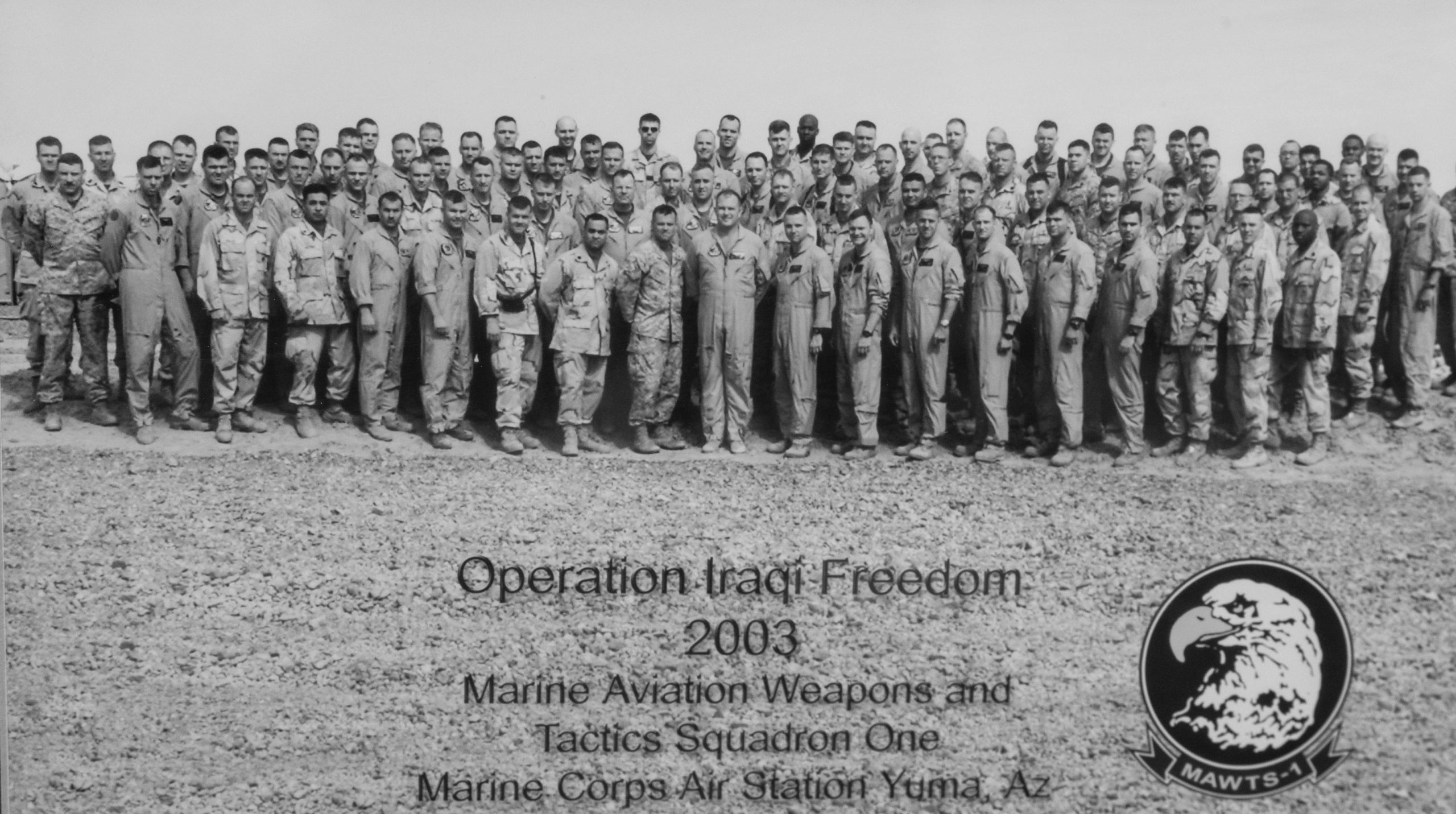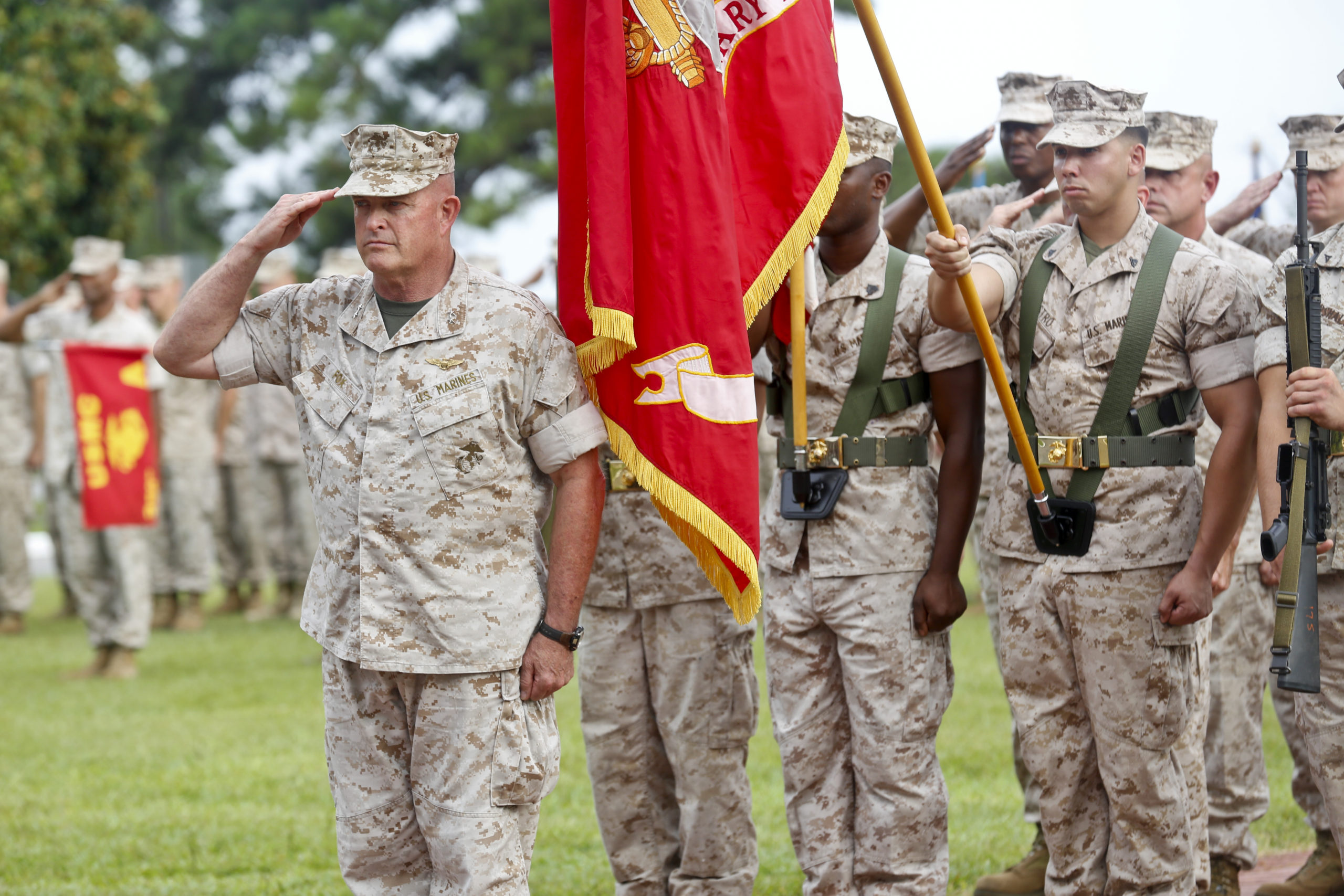The Perspective of the 13th Commander of MAWTS-1: MajGen Raymond Fox
MajGen Raymond Fox had a distinguished career of more than 37 years in the United States Marine Corps, where he completed his military service as the Commanding General, II Marine Expeditionary Force and Commander Marine Forces Africa.
During his service career, Fox has held both staff and leadership roles, including combat operations during Operation Desert Storm, Operation Iraqi Freedom and Operation Enduring Freedom. In his last command, he was responsible for the welfare, training and logistics support for more than 58,000 Marines and Sailors, deployed around the world.
Fox has logged over 5,000 hours in Marine and Navy aircraft since receiving his commission through the Platoon Leaders Class and receiving his Naval Aviator designation. He is a graduate of the Australian Army Command and Staff College and the U.S. Army War College, and earned a master’s degree in Strategic Studies from the U.S. Army War College, a Master’s in Public Administration from Shippensburg University (Pennsylvania) and a Bachelor of Arts in political science from Eastern Washington University.
We had a chance to talk with Fox on December 4, 2023 and to get his perspective on MAWTS-1. He started by noting that he was the first CO of MAWTS to have never previously been a WTI instructor, (the first few CO’s did not have time to be an Instructor pilot) although he had gone through as a student. He was CO from 1 November 2002 through 19 November 2004. This would fall in the period of Operation Iraqi Freedom and his Instructor Team would go to the war with 3D MAW, come back and do a WTI, 3 months after returning.
A photo of the MAWTS 1 team in Kuwait hangs on the wall of the officer’s bar at MAWTS-1.

Fox went to MAWTS in the summer of 2002 to get ready to take over the command. The practice is to work with the prior CO to you taking Command, (normally) the XO position and then rotating into the command slot, after seeing a complete cycle.
It was becoming clear that planes/forces were being sent to the Middle East in late 2022/2003 military operation so there was little point of having WTI instructors with no airplanes or students. According to Fox this meant most of the Instructor Pilots, C2 and Aviation Ground support Instructors Officer and Enlisted went to the Middle East. The next WTI was war. Fox went as a battle captain for General Amos and the 3D MAW.
Before they returned, Fox had the squadron members work on their lessons learned from the operation which they would take back as a basis for the WTI they would now do in the Fall of 2003. He noted: “This would be essential in this WTI for our assessment of what weapons and tactics were working and which were not working. We had a wealth of operational knowledge to work from.”
They briefed their findings to the Air Force at Nellis and the Navy at Fallon. Fox noted: “The Air Force was receptive; the Navy was less receptive.” He emphasized that in this period they worked integration of the TTP manuals with the Air Force and the Navy which is a key effort which three schools still pursue.
He noted that they set up the first Desert Talon exercise in January 2004. Coming from MEU background, Fox was used to workups for integrated operations on deployment. Desert Talon exercises were focused on integration of Marine Corps forces going to Iraq. This meant 2 WTI classes a year, 2 Desert Talon’s a year and Constant trips to Iraq to stay up to date on threat and TTPS.
Fox mentioned that the City of Yuma, and Yuma County leadership let them do convey protection exercises whereby Marine Air ran air cover for conveys and did so in Yuma itself. As Fox noted: “This allowed the ground side and the air side to learn how to work together for convoy protection.”
As he looked back at his time at MAWTS he emphasized that “the greatest thing about MAWTS is the people. You generally get the best the USMC has to offer in each area of the Marine Corps. And generally, we got great support from the joint world as well. The previous MAWTS1 Commanders, deliver mentoring and guidance.”
He also mentioned the role which Post Command rotary/fixed wing colonels played as providing an “extra set of eyes and ears to help out” During the flight phase, this idea was generated by Jon Davis who would replace him.
He concluded with a really key point. “The CO of MAWTS controls, the red, the blue and the white – the whole battlefield. This allows for very innovative scenarios and training for the students. And the WTI instructors and the students in the FINEX get to experience first hand what combat integration and adversary efforts to break up an integrated force is all about.”
Featured Image: U.S. Marine Corps Maj. Gen. Raymond C. Fox, commanding general of II Marine Expeditionary Force, salutes during his retirement ceremony at Camp Lejeune, N.C., July 16, 2014. Fox retired after 37 years of honorable and faithful service to the corps. U.S. Marine Corps photo by Sgt. Gabriela Garcia/Released.

